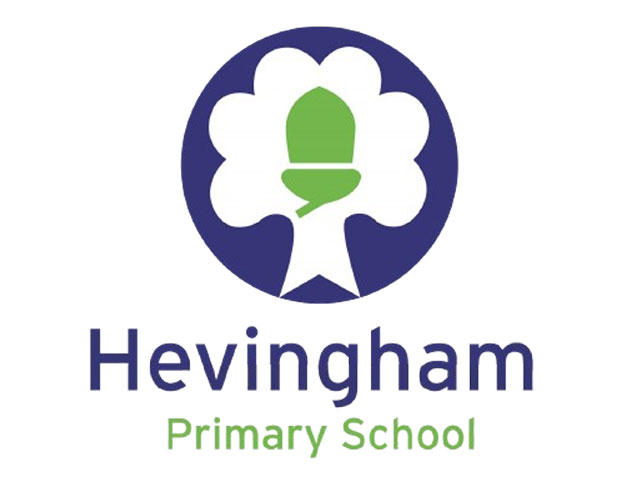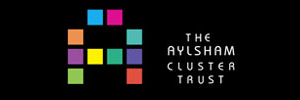Intent
At Hevingham and Marsham Primary School Partnership, our Maths curriculum is designed with the three National Curriculum aims at its heart; fluency, reasoning and problem solving. For children to achieve as much as they can in the next phase of their education, we organise, plan and deliver Maths teaching which gives our learners the opportunity to be successful, whatever their current level of attainment.
To become a successful learner, our children have regular opportunities to practise core skills, to demonstrate their learning, and to reflect on and improve their learning each lesson. They will track their progress week by week, and have the opportunity to build on previous objectives to build on their base of understanding. Feedback gives them regular opportunities to respond and improve, and highlights their progress clearly. Our learning objective stickers give them the steps to be successful, and they use these to determine how successful they’ve been during each lesson. Termly point in time assessments gives children the opportunity to show how much their Maths has developed through the term, and they have opportunities to become specialists working in groups or pairs, sharing their knowledge and skills with others.
Our confident and healthy individuals make choices for their own learning, and can justify their challenge level choice before stretching their thinking or consolidating an earlier step. They share their progress with others, whilst applying their growth mindset to take pride in their progress at their own level; our children understand that sometimes learning Maths is difficult, but always worthwhile!
In Maths lessons that involve pairs or groups, our children become responsible and collaborative learners, with space, time and support given to each other to ensure all can make progress together.
By planning and delivering busy, interactive and investigative Maths learning, we aim to produce curious and mathematically-literate children, who not only achieve the aims of the curriculum but become confident and successful proponents for Maths in their careers and every-day life.
Implementation
Our teaching week incorporates a sequence of five Maths lessons, opportunities for children to learn and develop their times table knowledge, focussed target teaching of specific skills in groups, and a weekly calculation lesson.
• Sequence of five Maths lessons: planned sequences of learning focussed on the National Curriculum objectives, with differentiated tasks to support and stretch all learners. Breadth and depth of each objective is explored with a range of tasks, incorporating fluency, problem solving and reasoning. One of these is a shorter session within the sequence to facilitate calculation practice each week.
• Times table progress: Children from Year 2 have access to online times table games, with progress monitored and celebrated within classes. Counting at the beginning of lessons often includes times tables, and Key Stage 2 children have a weekly multiplication grid to complete in ten minutes – all opportunities to practise multiplication facts.
• Focussed target teaching: This may be as part of responding to feedback at the beginning of a lesson, or as a differentiated group. Children in Key Stage 1 and 2 also complete a weekly small-group skills checker- an adult-led group which practice core content from their Maths objectives (see ‘Lessons’). Targeted teaching within a normal lesson is based on an initial assessment question – see ‘Lessons’ below.
• Weekly calculation lesson: This differentiated slot gives children the opportunity to practise all four operations, with adult support or stretch built in. Children have ten minutes to choose their challenge level, complete four efficient methods, and check themselves or in a pair to try and find where they may have made a mistake.
Curriculum:
Our Maths curriculum is organised into National Curriculum areas; the children in each year group will explore similar objectives at similar points in time, with clear and progressive sequences of learning each day. Lessons include fluency, reasoning and problem solving most days for children, whether they’re working on a stretching challenge 3 level, or a supported challenge 1 level. We don’t have problem solving or reasoning days in our Maths week – every lesson is an opportunity to solve problems, explain our thinking and deepen and broaden our understanding.
Teachers plan lessons which use a variety of models, images and manipulatives to support and demonstrate the mathematical concept being learnt. The overview of teaching areas document maps what is taught when, with more specific detail in each area breakdown showing the objectives covered within those blocks. Those areas are slightly adjusted, rather than copied directly from the curriculum; as an example, algebra is included as an area further down the year groups, though it is specifically mentioned in the year 6 objectives. This is to ensure our curriculum is tailored to our learners; finding unknowns has been an area of specific challenge in previous years, so we have responded with our curriculum design.
Teachers use a weekly planning document to ensure progression through the week is logical and smooth, and often the teaching materials or outcomes will be used as part of a display or working wall in each classroom. These plans rely on colleagues specific knowledge, research and bank of resources to provide interesting and engaging Maths learning. It may be that colleagues supplement their own teaching plans with material from places like Whiterose Maths (to which we subscribe) or other providers of material that have been approved by the subject lead.
Lessons:
Lessons often begin with an Assessment Question (AQ) to determine prior knowledge and to organise differentiated groups – this leads to excellent pitch for every learner in every lesson, as our children have a wide variety of prior learning retained; constraining them to a group for the year would cap potential or guarantee permanent struggling. Tasks are differentiated through complexity, number of steps or exploring and explaining, so children whose understanding is already at the ‘low threshold’ can be quickly extended to a ‘high ceiling’ task to ensure motivation and progress. Questioning using Bloom’s thinking skills as a base are used to drive or support learning, and Maths discussion is valued as a tool to promote depth of understanding. AQs are also used to provide specific and targeted SEND provision in class. This means our children who have big gaps in their Maths learning can still access the same input and learning, and so work as part of the class, but receive the support they need to close gaps within the group with their teacher or TA providing the scaffolding needed.
Maths within EYFS is varied – sometimes the children will choose to take part in the focussed lessons that some of their year 1 class mates will do, but their continuous provision inside and outside gives them broad and exciting opportunities to achieve their Number and Space, Shape and Measure ELGs. Children’s maths achievements are recorded and shared on Tapestry or displayed in classroom.
For Key Stage 1 and 2, Maths lessons are usually recorded in Maths work books. We use A4 squared books (changing in 2023 from plain books) to scaffold place value and calculation methods, as well as giving children lines for their reasoning and explaining to keep presentation beautiful.
We have identified retention as a major barrier to our children’s progress throughout the school, so to develop the children’s retention of Maths concepts, children have a Mega Maths Motivation pack – this working document allows the children to record and reflect on their calculation progress, skills checker progress, as well as giving them a weekly opportunity to practise and consolidate the Maths skills in the area they’re working on. These Skills Checkers are delivered in smaller targeted groups, allowing teachers to tailor the practice to the learners in that group. Each week, the group works on one column out of three, where the questions relate to the teaching sequence that week. By keeping their previous skills checkers, the children can also see the methods they used previously, helping to over-learn and retain the content. By comparing their scores from one week to the next, the children develop a sense of their own achievement, and can see their progress in front of them. Similarly, and again to develop fluency and retention, all lessons begin with counting – an essential aspect of over learning to help retain place value, times table, and a wider variety of Maths concepts.
Supporting this, we have our Numicon programme in place to deliver extra intervention to smaller groups of children who have large or foundational gaps in their Maths learning. This takes part after a Numicon assessment, and targets the foundations of maths that will make a difference to their Maths outcome at the end of the year.
Assessment:
Our children in EYFS are observed throughout the year, with pictures, videos and notes collated together onto Tapestry. At the end of the year, the collated Tapestry ‘flags’ are used to make a decision about each child’s achievement of the Maths ELGs. This method also ensures coverage and helps with assessing/ moderation towards the end of the year, EYFS colleagues can quickly find and justify their judgements using tapestry.
For Year 1, 3, 4, and 5, we use PUMA assessments. These reputable and standardised assessments are ‘Point in time’, which gives us an accurate measure of attainment and progress through the three assessment weeks during the year. They also help to track children’s trajectory towards the end of Key stages, helping us identify target children.
Year 2 and 6 are assessed using past SATs papers to give a realistic and accurate attainment judgement throughout the year. We also can track their scaled score to ascertain progress – approximately 3 scaled score points per term counts as expected progress for us. By tracking these children with end of phase assessments, the data on Pupil Asset cannot be compared with other year groups, especially at the beginning of the year when compared with ‘Point in time’ assessments. However, continuous conversation with staff and subject leaders give context for attainment and progress figures, and the tracking throughout the year shows their progress, culminating in an end of year attainment in line with other year groups’ end of year judgement. Though this can seem a disparate approach, the benefit for our Year 2 and 6 children is evident in them becoming familiar with testing formats, as well as the slightly longer assessments giving an even more granular picture of their attainment.


